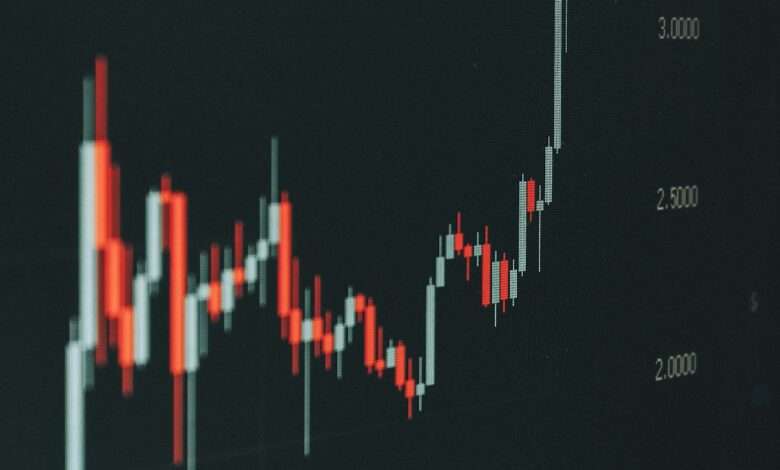Dow Jones Market Drop Explained: Key Insights
Understand today's Dow drop with our comprehensive market analysis. Discover key factors like economic indicators, interest rates, and global events.

Market Analysis: Dow’s Drop Explained Today
Understanding the fluctuations in the stock market can be perplexing, especially when significant indices like the Dow Jones Industrial Average take a dive. Today, we’ll delve into why the Dow dropped, the contributing factors, and what it means for investors.

The Dow Jones: A Quick Overview
Before we explore today’s market movement, let’s understand what the Dow Jones Industrial Average (DJIA) represents. Established in 1896, the DJIA is a stock market index that measures the stock performance of 30 prominent companies listed on stock exchanges in the United States. It’s one of the most-watched indices in the world and often used as a barometer for the overall health of the U.S. economy.
Why Did the Dow Drop Today?
Several factors can influence the stock market, and the Dow Jones is no exception. Let’s break down the key reasons for today’s decline.
Economic Indicators
Economic indicators are statistics that provide insights into the economic performance of a country. They can include employment rates, GDP growth, and consumer spending. If new data reveals a weaker-than-expected economy, investors might sell stocks, leading to a market drop.
Today, a disappointing jobs report showed fewer job gains than anticipated. Such news can stir investor concerns about economic growth and potential downturns, prompting them to pull back from stocks.
 Interest Rates and Central Bank Policies
Interest Rates and Central Bank Policies
Interest rates set by central banks like the Federal Reserve have a substantial impact on stock markets. Higher interest rates can make borrowing more expensive for companies, potentially slowing expansion and profit growth. Conversely, lower rates can encourage investment but may signal economic troubles.
Today, speculation about future rate hikes by the Federal Reserve spooked investors. Concerns that the central bank might increase rates to control inflation led to uncertainty and a sell-off.
Global Events
Events beyond the U.S. borders can also weigh on the Dow Jones. Political instability, trade tensions, or economic crises in other countries can cause ripples in U.S. markets.
Recent geopolitical tensions, particularly in Eastern Europe, have heightened fears of international conflicts. The potential for disruptions in global trade and energy markets has made investors wary, contributing to today’s market downturn.
Stock Market Volatility: A Normal Phenomenon
It’s important to remember that stock market fluctuations are normal. The market reacts to news, events, and investor sentiment, which can cause short-term volatility. However, long-term trends are usually more stable, and experienced investors often view dips as buying opportunities.
Investor Sentiment
Investor sentiment refers to the overall attitude of investors toward a particular market or security. It’s driven by emotions and perceptions rather than concrete fundamentals. When sentiment turns negative, it can lead to a market sell-off, as seen today.
Factors such as fear of economic slowdown, corporate earnings reports, and political developments can sway investor sentiment, often leading to abrupt market movements.
What This Means for Investors
For investors, understanding why the market moves is crucial for making informed decisions. Here’s what today’s drop means for different types of investors:
Long-Term Investors
If you’re investing for the long haul, daily market fluctuations shouldn’t cause panic. Instead, consider these dips as opportunities to buy quality stocks at lower prices. Historically, the stock market has trended upward over time, rewarding patient investors.
Short-Term Traders
For traders looking to capitalize on short-term price movements, today’s drop might offer opportunities for quick gains. However, it’s vital to stay informed and have a strategy in place to mitigate risks.
Diversification is Key
Whether you’re a long-term investor or a short-term trader, diversification is essential. Spreading your investments across different asset classes and sectors can reduce risk and enhance returns.

Keeping an Eye on the Future
While today’s Dow drop may be concerning, it’s important to focus on the bigger picture. Economic fundamentals, corporate earnings, and global developments will continue to shape the market landscape.
Stay Informed
To navigate the stock market effectively, stay informed about economic indicators, central bank policies, and global events. Follow reliable financial news sources, and consider consulting financial advisors for personalized advice.
Have a Plan
Having a well-thought-out investment plan can provide clarity and confidence during market volatility. Set clear financial goals, establish a risk tolerance, and stick to your strategy even when the market experiences turbulence.
Conclusion
The Dow’s drop today underscores the complexity of the stock market and the myriad factors influencing its movements. By understanding these elements, investors can make informed decisions and capitalize on opportunities, whether in a bull or bear market. Remember, market volatility is part of investing, and maintaining a long-term perspective can help you navigate the ups and downs with confidence.




